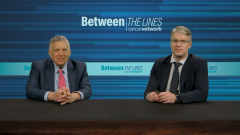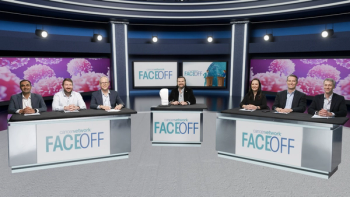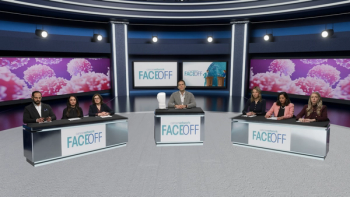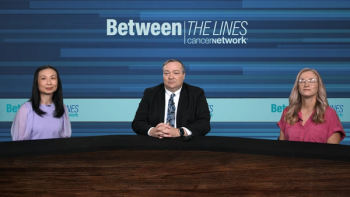
Decision-Making Factors in Choosing Combination Therapies in EGFR-Mutated NSCLC
Panelists discuss how the growing role of combination therapies in EGFR-mutated non–small cell lung cancer (NSCLC) influences the choice between the MARIPOSA and FLAURA2 trials, considering overall survival data, multidisciplinary implementation, patient education, and their impact on first-line prescribing decisions.
Episodes in this series

Video content above is prompted by the following:
Comparing MARIPOSA vs FLAURA2 in EGFR-Mutated NSCLC: Implementation Guide
Key Decision Factors Between MARIPOSA and FLAURA2
- Data Maturity: MARIPOSA has a clear advantage in data generation and maturity compared with FLAURA2.
- Overall Survival (OS): MARIPOSA shows compelling OS data with an HR of 0.79 (upper confidence limit 1.02) and curves separating at later time points.
- Brain Metastases: Both regimens show promising brain activity, as follows:
- MARIPOSA demonstrates 36% of patients remain brain metastasis-free at 3 years vs only 18% with monotherapy.
- Intracranial duration of response shows stabilization until 2 years, then a clear separation of curves.
- A 6-month benefit in intracranial durability was shown with combination therapy.
Impact of OS Data on Decision-Making
- OS data strongly supports using combination therapy over monotherapy.
- Physicians emphasized using the best therapy first because there's approximately 30% attrition between therapy lines.
- The plateau in survival curves, particularly for brain metastasis prevention, is clinically meaningful.
Implementation in Practice
Multidisciplinary Approach
- Team Education: Sharing data with the entire team (including infusion nurses and patient education nurses)
- Dermatology Collaboration: Essential to have dermatologists who understand these trials
- Teleconsultation option: "I can send a picture over to my dermatologist, and he or she will send you back exactly what to do"
- Psychiatry Support: May be needed for some patients experiencing adverse effects
Patient Education
- Discussing Options: Taking time to explain the complexity of choices
- Patient-Centered Approach
- Managing Expectations: Preparation for potential adverse effects and their management
Expected Changes in Prescribing Patterns
- Movement away from single-agent osimertinib toward combination approaches
- Need for physician experience
- Recognition that with experience comes knowledge
- Opportunity to tailor treatment to individual patient needs with 2 strong options
- Real-world data will further inform optimal usage.
Future Directions
- Need for real-world prospective data collection to optimize:
- Treatment duration
- Combination strategies
- Adverse effect management
Importance of biomarker work to better understand mechanisms of brain protection
Newsletter
Stay up to date on recent advances in the multidisciplinary approach to cancer.


















































































